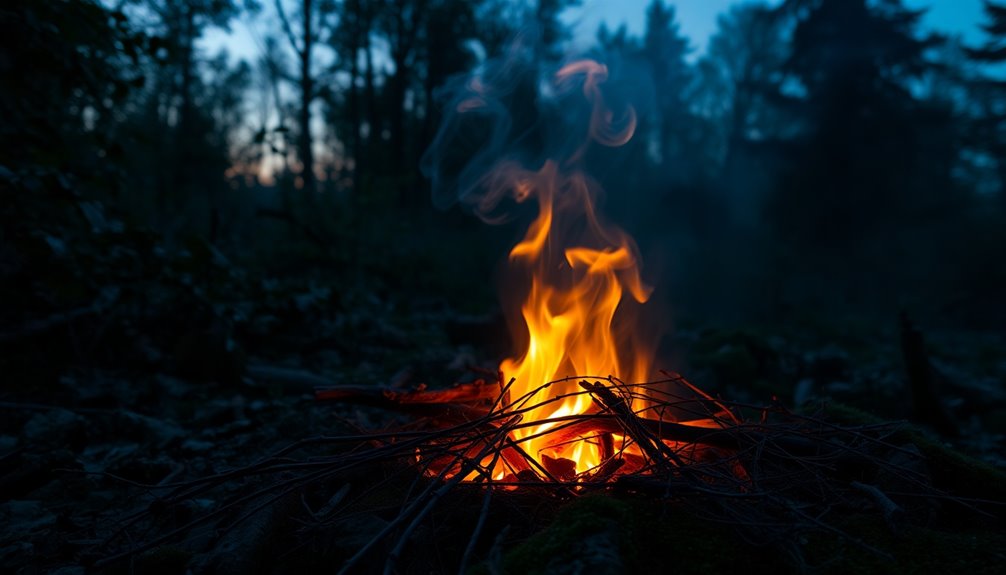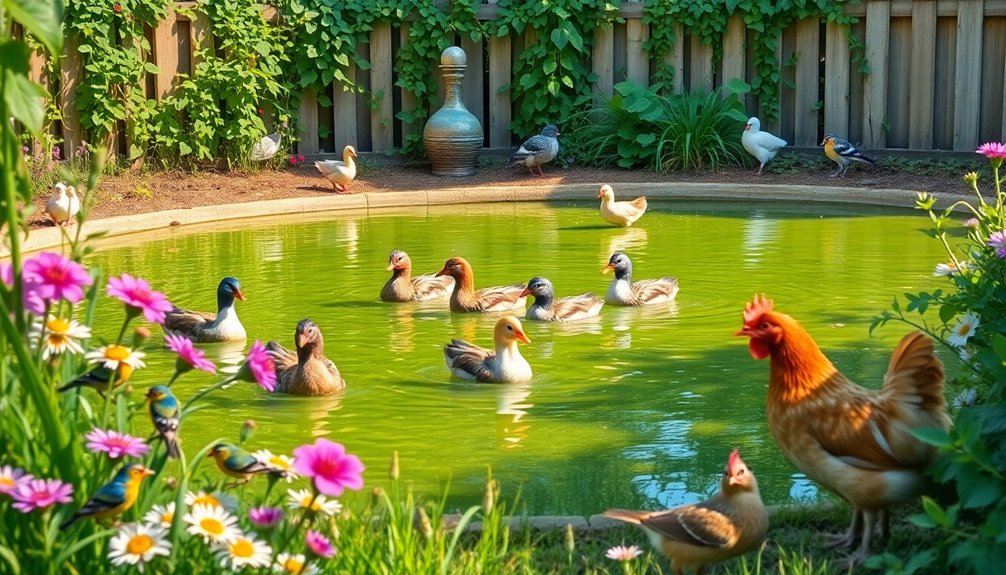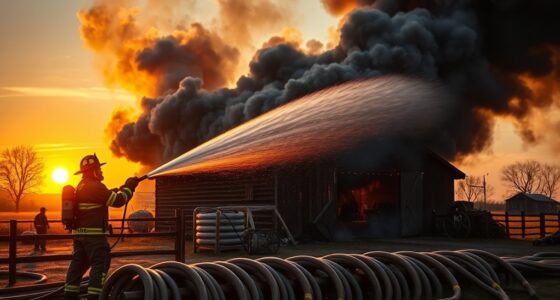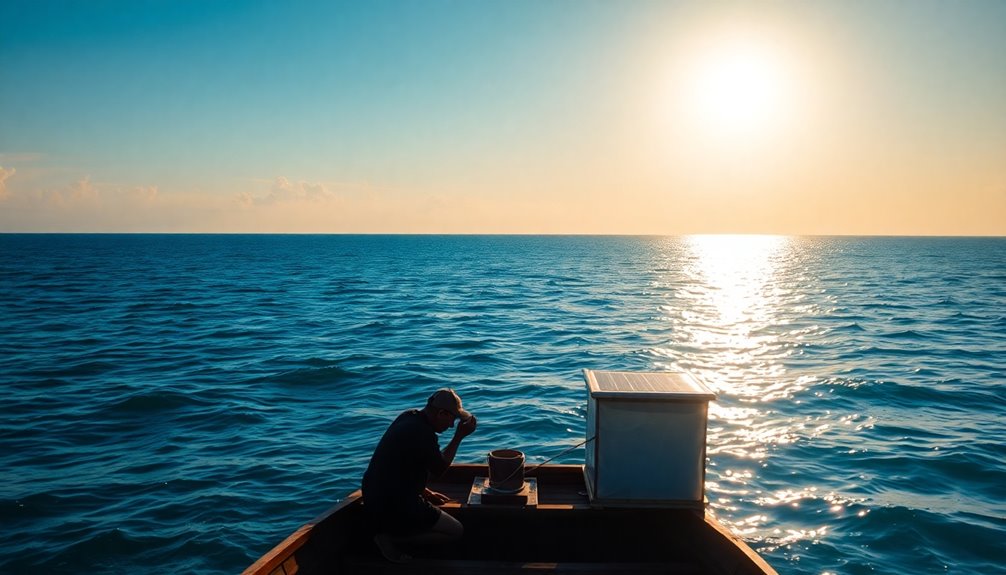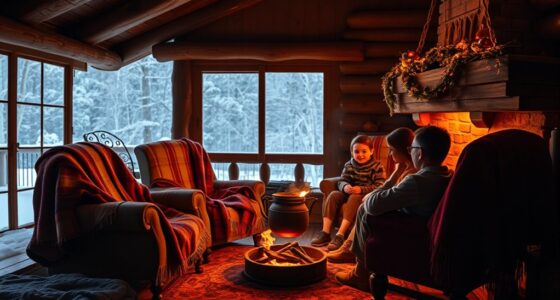Mastering the art of starting a fire in the wilderness can boost your safety and enhance your experience outdoors. Start by gathering the essentials: tinder, kindling, and fuel. Choose dry materials like cotton balls with Vaseline or dry leaves for quick ignition. A ferrocerium rod is your best friend for reliable sparks, especially in tough conditions. Organize your wood for airflow, ensuring a sustainable blaze. Finally, understanding fire management not only keeps your fire alive but also serves as a vital signal for help. Keep exploring, and you'll discover even more effective techniques for any situation.
Key Takeaways
- Select the right tinder, such as dry grass or cotton balls with Vaseline, to ensure quick ignition in the wilderness.
- Use a ferrocerium rod to create reliable sparks, as it outlasts matches and performs well in adverse conditions.
- Prepare wood by organizing it into skinny, medium, and larger pieces to promote airflow and maintain a sustainable fire.
- In survival situations, fire provides warmth, security, and serves as a crucial signaling tool for rescuers.
- Master improvised techniques like the bow drill to enhance your fire-starting skills and adaptability in different environments.
Introduction
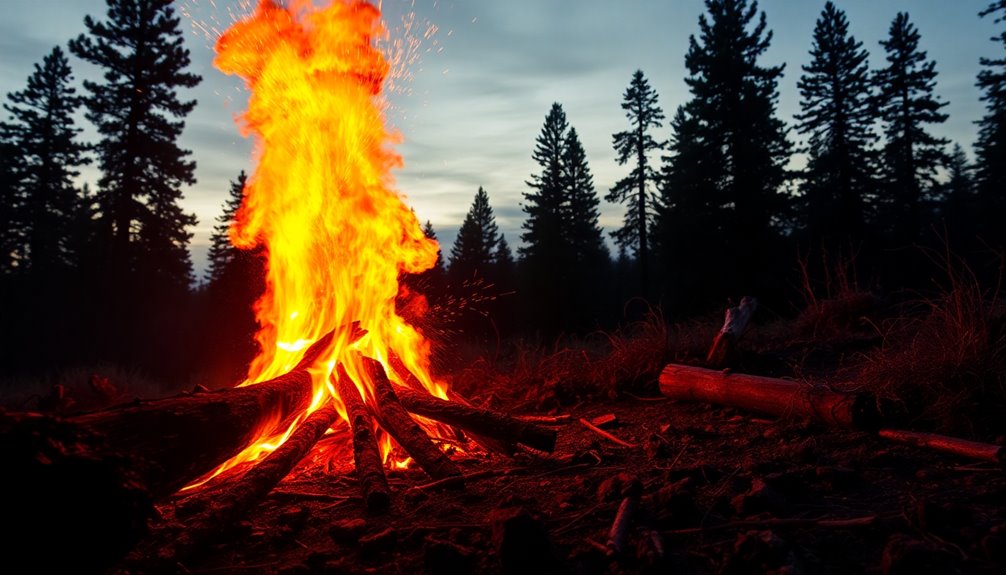
Starting a fire isn't just about warmth; it's a vital skill that can enhance your survival in the wilderness.
In this course, you'll master essential fire-building techniques and learn how to choose the right materials for any situation.
Course Highlights and Benefits
When you enroll in The Art of Fire 10-Week Course, you'll dive into a hands-on learning experience that equips you with essential fire-starting techniques for any situation.
You'll explore various methods, from using the sun to creating a Bow Drill Kit, ensuring you develop a comprehensive skill set.
Week 1 lays the groundwork by teaching you how to select effective tinder and evaluate unconventional materials for fire building.
As you progress, you'll gain practical experience using a ferro rod, boosting your confidence in emergency scenarios.
Plus, you'll receive valuable bonuses like a complimentary Fire Starting Tin and access to informative e-books.
This course is structured to help you master fire-starting skills crucial for wilderness survival.
Master Fire Starting Skills
Mastering fire starting skills is crucial for anyone venturing into the wilderness, as it can make the difference between survival and discomfort.
To ensure fire safety, you need to understand various tinder types, like cotton balls treated with Vaseline, which ignite quickly. Utilizing a ferrocerium rod instead of matches is a smart choice; it produces reliable sparks even in adverse weather.
Remember, a proper fire consists of three essential components: tinder, kindling, and fuel. Arrange your wood by size for maximum efficiency.
Additionally, practicing techniques like the bow drill method and flint & steel can prepare you for unexpected situations. Always monitor your fire's sound and appearance to maintain a sustainable heat source; this keeps your fire thriving.
Fire Starting Fundamentals
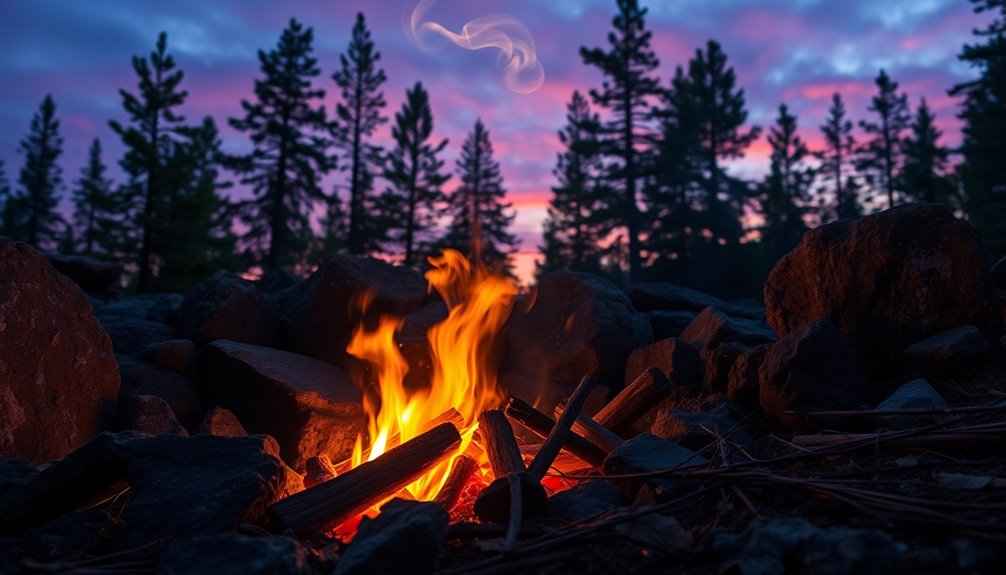
To successfully ignite a fire in the wilderness, understanding the three essential components—tinder, kindling, and fuel—is crucial.
Start with tinder, like cotton balls treated with Vaseline or dry leaves, as they catch fire quickly and enhance ignition success.
Next, use kindling, which should be skinny sticks that catch fire easily and help grow your flames.
Finally, add fuel—larger logs that sustain heat.
When you're ready to start a fire, consider using a ferrocerium rod instead of matches or lighters; it creates sparks even in wet conditions.
Properly prepare your wood by arranging it for airflow, and remember to add more wood gradually as the fire grows, ensuring you maintain a sustainable blaze.
Fire as a Survival Signal

When you're lost in the wilderness, a fire can be your best friend for signaling rescuers.
In extreme conditions, adapting your fire to create visible or audible signals can make all the difference in attracting attention.
Survival in Extreme Conditions
In extreme survival situations, a fire can be your most effective signal for help. It's visible from great distances, especially in remote areas where communication methods fail.
To send a clear message, use the color and size of the smoke. Thick, black smoke signals distress, while controlled, white smoke indicates a more normalized situation. For a signal fire, burning green vegetation produces more smoke, enhancing visibility for rescuers.
Build your fire in a clear area away from flammable materials to maximize visibility and reduce risks. Additionally, using reflective materials or mirrors alongside the fire can boost your chances of being spotted, particularly in challenging weather conditions.
Always prioritize safety while signaling for help.
Adapting to Weather Extremes
Adapting to unpredictable weather conditions is vital for survival, especially when it comes to using fire as a signal. In heavy rain or strong winds, build a windbreak and use waterproof tinder to keep your fire going.
To create a signal fire, incorporate green vegetation; this generates thick smoke, making it easier for rescuers to spot you. In cold weather, a fire not only warms you but can also produce smoke signals. Enhance visibility by placing reflective materials nearby.
Always carry a reliable fire-starting tool, like a ferro rod or magnesium, since traditional matches may fail in extreme conditions. Your ability to adapt your fire-making techniques can mean the difference between rescue and remaining lost in the wilderness.
Fire Starting Gear Essentials
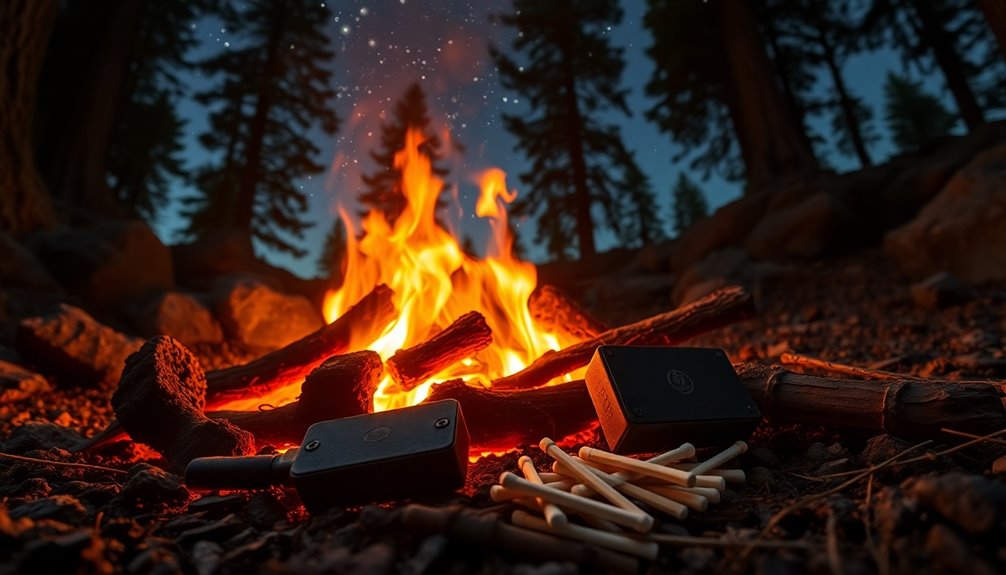
To successfully start a fire, having the right gear is essential. A ferrocerium rod is a must-have; it produces reliable sparks when struck and outlasts traditional matches.
For tinder, consider cotton balls treated with Vaseline; they're compact and ignite easily, enhancing your fire's burn time.
Don't forget a sturdy knife or a striking tool like an elk antler to generate those important sparks from your ferro rod, allowing multiple attempts in tough conditions.
Wood preparation is also key—organize your wood into skinny, medium, and larger pieces to ensure proper airflow and burning efficiency.
Finally, including magnesium in your fire kit gives you an extra option for starting flames, especially in challenging environments.
Fire Starter Equipment Guide
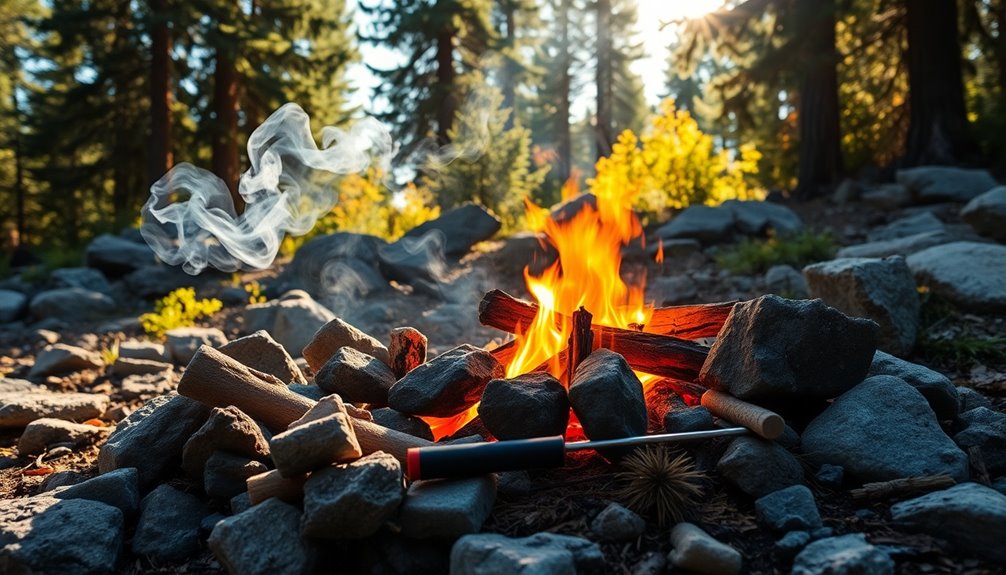
When you're out in the wilderness, having reliable fire starter equipment can make all the difference between a cozy campfire and a frustrating struggle.
Consider investing in tools like the Black Beard Fire Starter, known for its quick ignition and performance in adverse weather. A ferrocerium rod acts as a synthetic flint and is essential for producing sparks.
Pair it with cotton balls treated with Vaseline for a highly effective tinder. Remember to prep your wood properly; categorize it into skinny, medium, and larger pieces to enhance airflow and sustain your flames.
Don't forget safety gear and always follow proper techniques to maximize effectiveness and minimize risks when using your fire starter equipment in the wild.
Fire Starter Selection Tips
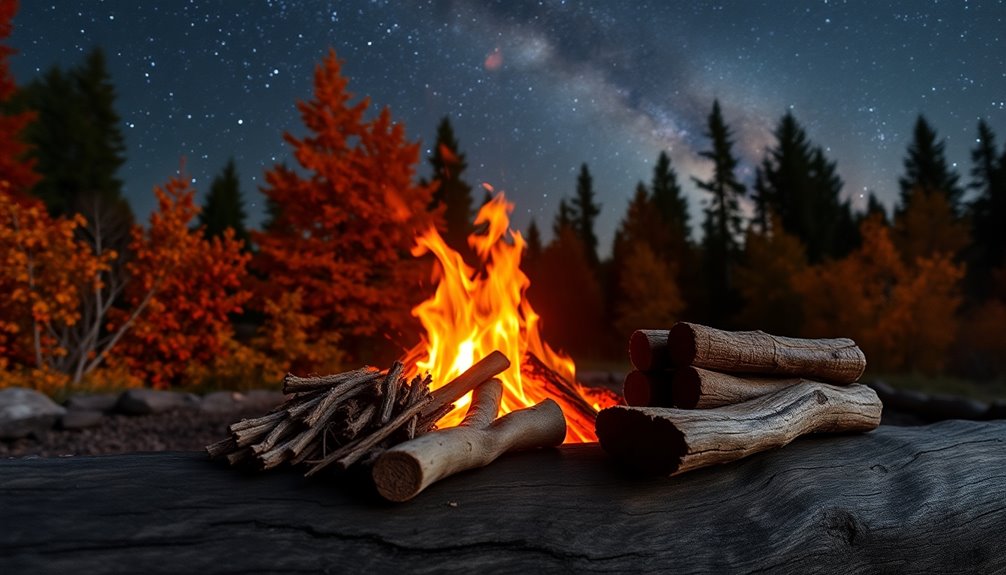
Selecting the right fire starter can make a significant difference in your outdoor experience. Consider using Black Beard Fire Starters for their quick ignition and long-lasting burn, especially in challenging weather conditions.
Look for eco-friendly options made from sustainable materials, as these biodegradable starters reduce your environmental impact. Ensure your kit includes a ferrocerium rod; it creates reliable sparks, even in damp conditions.
Opt for compact and lightweight fire starters to make transport easy, keeping essential tools at hand during your adventures. For best results, pair your fire starter with effective tinder materials like cotton balls treated with Vaseline.
This combination enhances ignition success and keeps your fire burning strong, ensuring a cozy experience in the wilderness.
Firestarter Misfires and Remedies

When your firestarter misfires, it often comes down to the materials you're using.
You need to compare different firestarter options and select the optimal tinder for your conditions to boost your chances of success.
Let's explore how the right choices can make all the difference in getting that fire going.
Fire Starter Material Comparisons
In the world of fire starting, the choice of materials can make or break your success, so understanding the differences in fire starter options is crucial.
Cotton balls treated with Vaseline ignite well, while dryer lint offers a quick flame but varies in effectiveness. You might encounter misfires with damp or poorly prepared tinder; ensure everything's dry and fluffed for optimal oxygen exposure.
When using Ferro rods, remember that the angle and force of your strike matter—too shallow won't yield sparks, but a firm strike will.
Natural materials like dry pine needles and bark work wonders due to their low moisture and high resin content.
If your primary options fail, magnesium strips can serve as a reliable backup.
Optimal Tinder Material Choices
Choosing the right tinder is key to avoiding frustrating firestarter misfires. Opt for materials like dry grass, bark, pine needles, or cotton balls treated with Vaseline. These ignite quickly and sustain a flame effectively.
Steer clear of damp or green materials, as moisture can hinder ignition and lead to failure. You might experiment with unconventional tinders, like dried animal dung or natural bird nests; just ensure they catch a spark and burn hot enough.
If you encounter a misfire, reassess your tinder's dryness and fluffiness—finely shredded tinder maximizes oxygen exposure for better ignition.
Lastly, carrying a variety of tinder in your survival kit boosts your chances of successfully starting a fire in different conditions.
Survival Stories From the Field
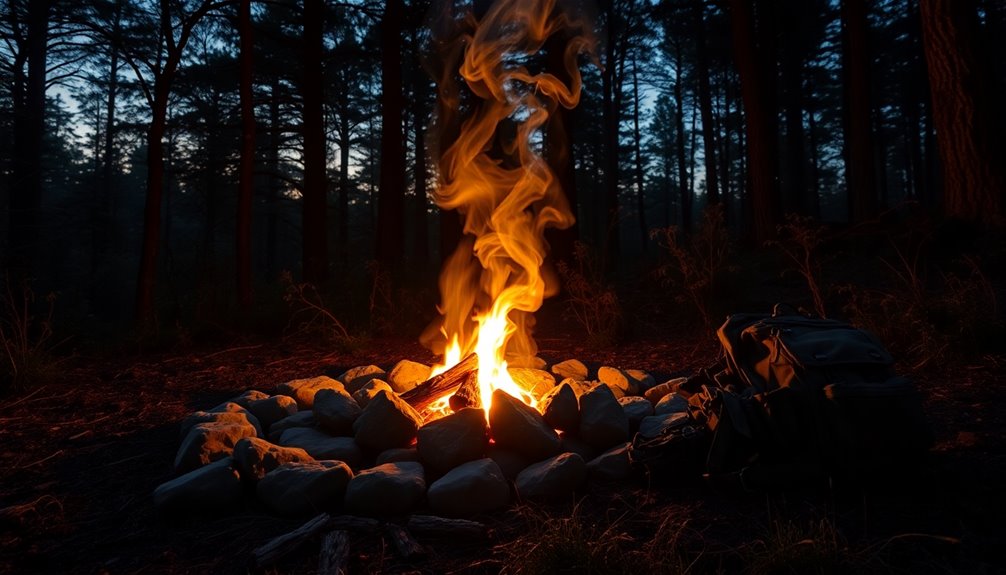
Survival stories from the field often reveal how essential fire can be in life-or-death situations. Many survivors recount using improvised techniques like ferro rods or bow drills, highlighting the necessity of mastering these skills.
When faced with harsh conditions, knowing how to build a stable fire using methods like the platform and brace can mean the difference between warmth and exposure. Survivors report that starting a fire boosts morale and fosters a sense of security, vital for psychological resilience.
Furthermore, documented rescues often mention that smoke signals from a fire played a crucial role in locating lost individuals. These stories underscore that effective fire management isn't just a skill; it's a lifeline in the wilderness.
Conclusion

Mastering the art of starting a fire isn't just a skill; it's a vital component of outdoor survival that can significantly impact your experience in the wilderness.
By understanding various methods and utilizing essential tools like ferro rods and treated cotton balls, you can ignite a flame effectively.
Don't forget the importance of weather-resistant fire starters, such as Black Beard Fire Starters, especially in adverse conditions.
Proper fire management—like arranging wood for airflow and monitoring the sound—ensures your fire remains healthy and sustainable.
Incorporating different wood types, like pine and cedar, enhances efficiency and longevity.
With these techniques, you'll be well-equipped to create warmth, cook food, and signal for help, truly mastering fire in any outdoor setting.
Additional Resources

When it comes to honing your fire-starting skills, leveraging additional resources can make all the difference.
Consider enrolling in "The Art of Fire" course by Creek Stewart. You'll gain comprehensive lessons on various fire-starting techniques and practical applications for wilderness survival.
As a bonus, you'll receive a Fire Starting Tin and e-books that cover essential methods like Bow Drill and Survival Solar Fire Starting.
Join a supportive community through course forums and a private Facebook group, where you can share experiences and learn from others.
Don't forget to utilize the downloadable materials and guides to reinforce your understanding.
Plus, enhance your practice with hands-on opportunities at Willow Haven, applying the techniques you've learned in real-world scenarios. Additionally, understanding the principles of Leave No Trace will help you minimize your environmental impact when starting fires in the wilderness.
Frequently Asked Questions
Why Is Fire Important in the Wilderness?
Fire's crucial in the wilderness for several reasons.
It keeps you warm, preventing hypothermia during chilly nights. You can cook food, making it safer and more nutritious.
Fire also helps signal for rescue, with smoke or flames catching attention. It lights up your surroundings, helping you navigate and avoid accidents after dark.
Plus, you can purify water by boiling it, ensuring you have safe drinking water when needed.
What Was the Ancient Way of Making Fire?
The ancient way of making fire involved techniques like the bow drill and hand drill, where you'd rub wood together to generate heat and create embers.
You might've also struck flint against steel to produce sparks that could ignite tinder, such as dry grass or bark.
Some cultures even used pyroligneous acid, a flammable liquid from low-oxygen wood burning.
These methods showcase human ingenuity in mastering fire-making throughout history.
How Do You Start a Fire in the Wilderness Without Matches?
To start a fire in the wilderness without matches, gather dry tinder like leaves or cotton balls, and prepare kindling and larger wood nearby.
Use a ferrocerium rod to create sparks, directing them at your tinder. You can also try the bow drill method, creating friction between a spindle and fireboard to generate an ember.
Remember to clear the area of flammable debris and keep an eye on the fire as it grows.
How to Survive in the Wilderness With Fire?
To survive in the wilderness with fire, you need to understand its importance.
Gather tinder, kindling, and fuel wood, ensuring you clear any flammable materials from your fire area.
Use techniques like a ferro rod or bow drill to ignite your fire, and choose the right wood for efficient burning.
Monitor the fire closely, adjusting the wood as needed.
With fire, you'll stay warm, cook food, and protect yourself from wildlife.

